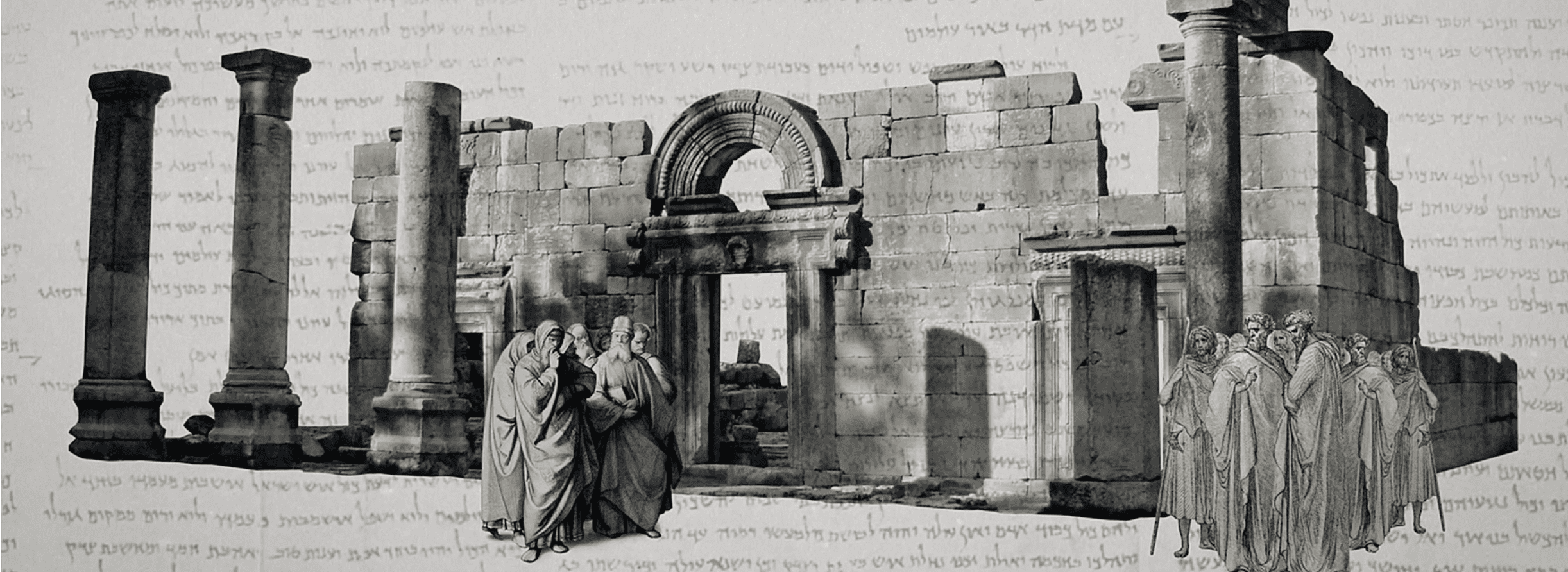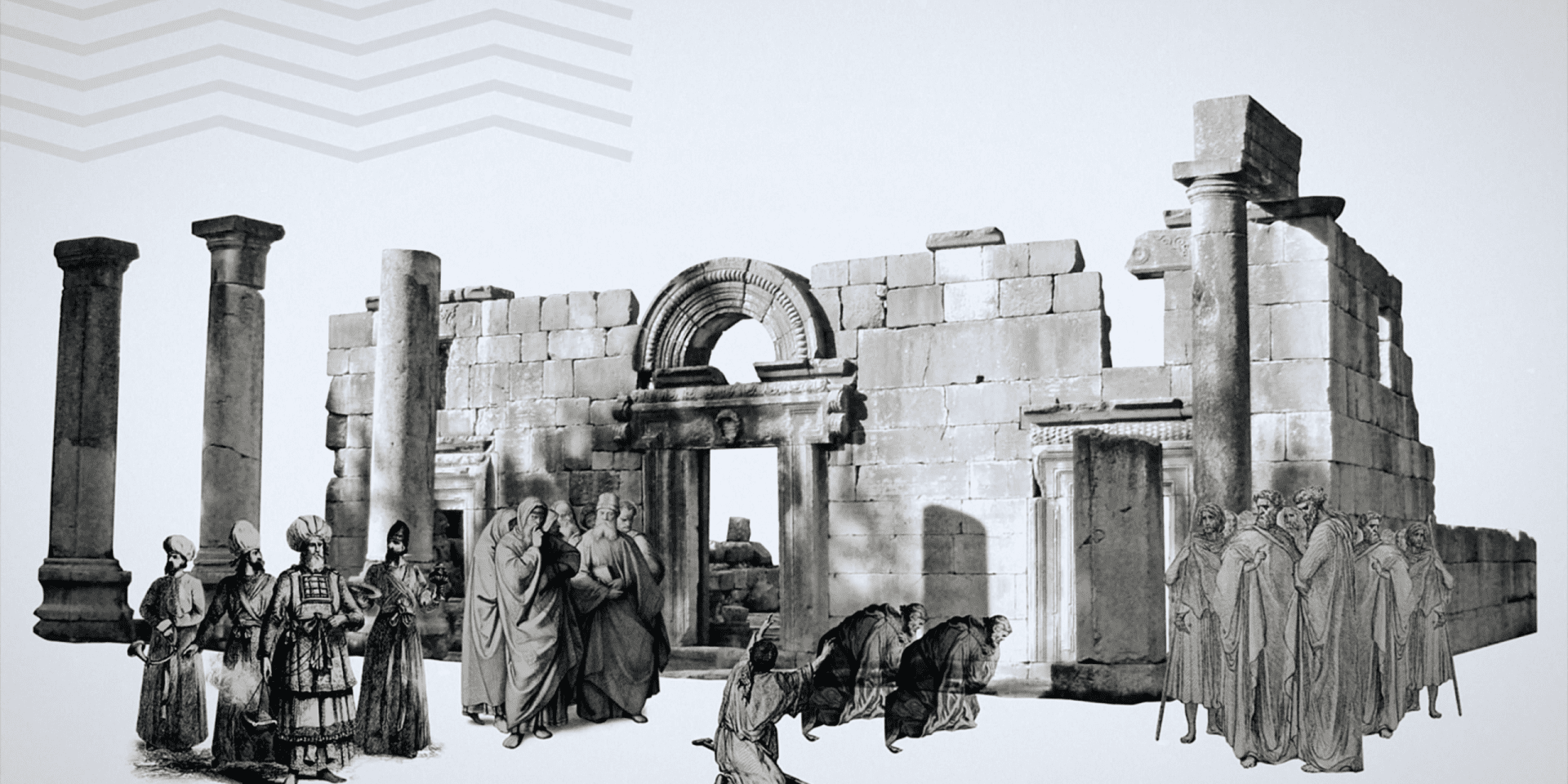All around the world synagogues are an integral part of Judaism. From the Greek meaning “place of assembly”, the synagogue today is referred to as a house of prayer (bet ha-tefilla), house of assembly (bet ha-kneset), house of study (bet ha-midrash), and in some cases even temple[1].
While this institution’s recent 2,000 years of history can be tracked relatively easily, its origins are still a bit of a mystery. There are no mentions of synagogues in the Old Testament of the Bible, so it is commonly believed that synagogues must have developed after the destruction of Solomon’s Temple in 586 BC. The reasoning goes that once robbed of the central element of Jewish faith, the priests of Judah began teaching, reading and studying Torah. Buildings, perhaps homes, were refurbished to facilitate this and soon the synagogue, the assembly of faithful Jews observant to the covenant, became a cornerstone in Jewish society. One of the obvious benefits being that any community, despite their geographical location and distance from Jerusalem, could have their own synagogue.

The earliest mention of synagogues may come from a 3rd Century BC Egyptian inscription. Beyond this, by the 1st century AD synagogues were a part of normal Jewish life receiving mentions by Philo of Alexandria (20BC-40AD), Flavius Josephus (37-100AD), the New Testament, and later rabbinic literature.
Amazingly, just south of the Temple mount in Jerusalem the Theodotus inscription was found. It once adorned a synagogue that lived practically in the shadow of the Temple, demonstrating that the two establishments were not competitive.[2] The inscription tells us that synagogues had been around for some time (he was the third generation of synagogue leader in his family), they were used for studying the Scriptures, as a hostel, and they kept water for Jewish purification rituals (Hand and foot washing, Mikveh). Early synagogues seem not to have been associated with prayer, though of course, prayer may have occurred there, only it doesn’t seem to have been their main function, likely because of the Temple’s scriptural role as a “house of prayer” (Isaiah 56:7). Synagogues were for Torah, lodging, and daily ritual purity, whereas the Temple was for sacrifices, religious festivals, and prayer.


The Second Temple’s destruction by Rome in AD 70 changed the function and focus of synagogues. Without a place for sacrifice, festivals and prayer, the people turned to their synagogues and emphasized what they could do to follow God: the sacrifices of studying scripture and praying three times a day to correspond to the times animal sacrifices used to be made at the Temple (like Daniel). The Temple had been destroyed before (586 BC) and Judaism had been able to maintain a strong religious culture.
Interestingly, the Torah Ark, the shelved box in which a synagogue’s Scriptures were kept, was also directly influenced by the destruction of the Temple. As synagogues changed to preserve the memory of the Temple, the Torah Ark was treated to represent the holy of holies, called an ark to reference the Ark of the Covenant, decorated with Temple motifs, and sometimes flanked with curtains, as was the holy of holies. The orientation of the seating benches also shifted from a central focus to a Torah Shrine focus, which was normally located on the Jerusalem facing wall.

Corie Bobechko is a daily co-host, speaker, and writer of Bible Discovery. She also hosts a YouTube channel that shows how history and archaeology prove the Bible. Her heart for seekers and skeptics has led her to seek truth and share it with others. Corie also has a Bachelor of Theology from Canada Christian College.
[1] https://www.britannica.com/topic/synagogue
[2] Fine, Steven. “Did the Synagogue Replace the Temple?” Bible Review 12.2 (1996): 18–26, 41.
https://www.baslibrary.org/bible-review/12/2/6






